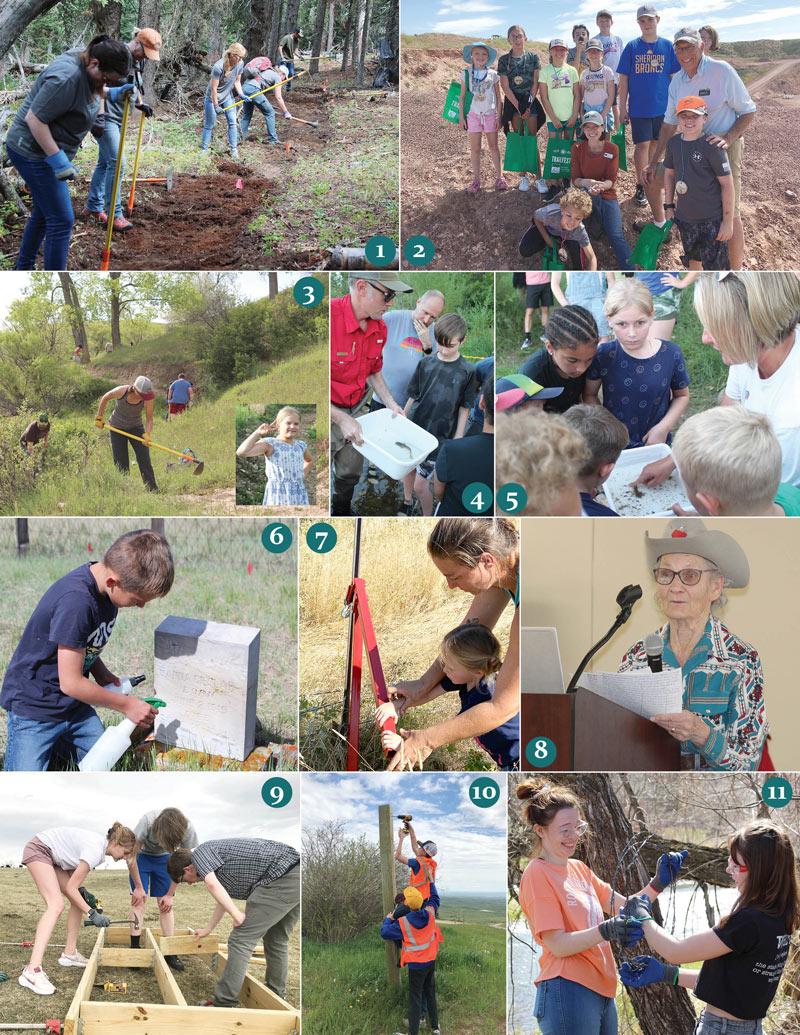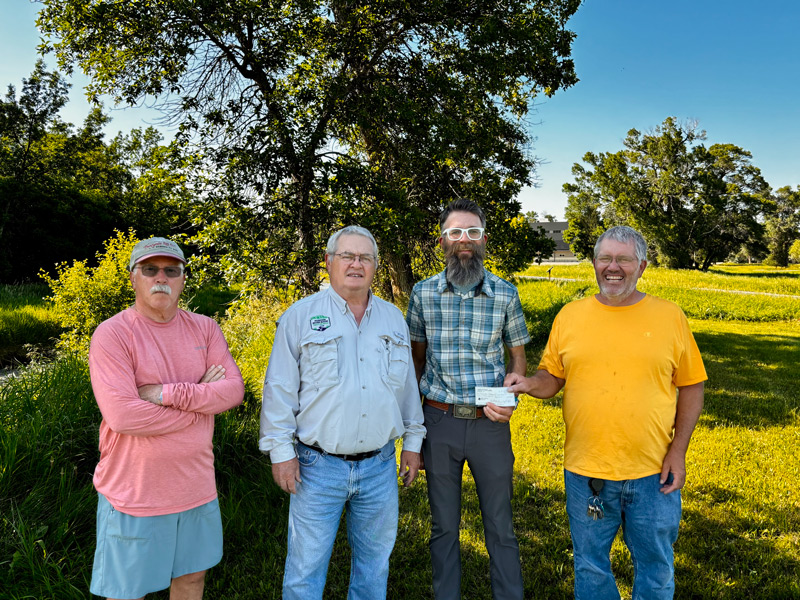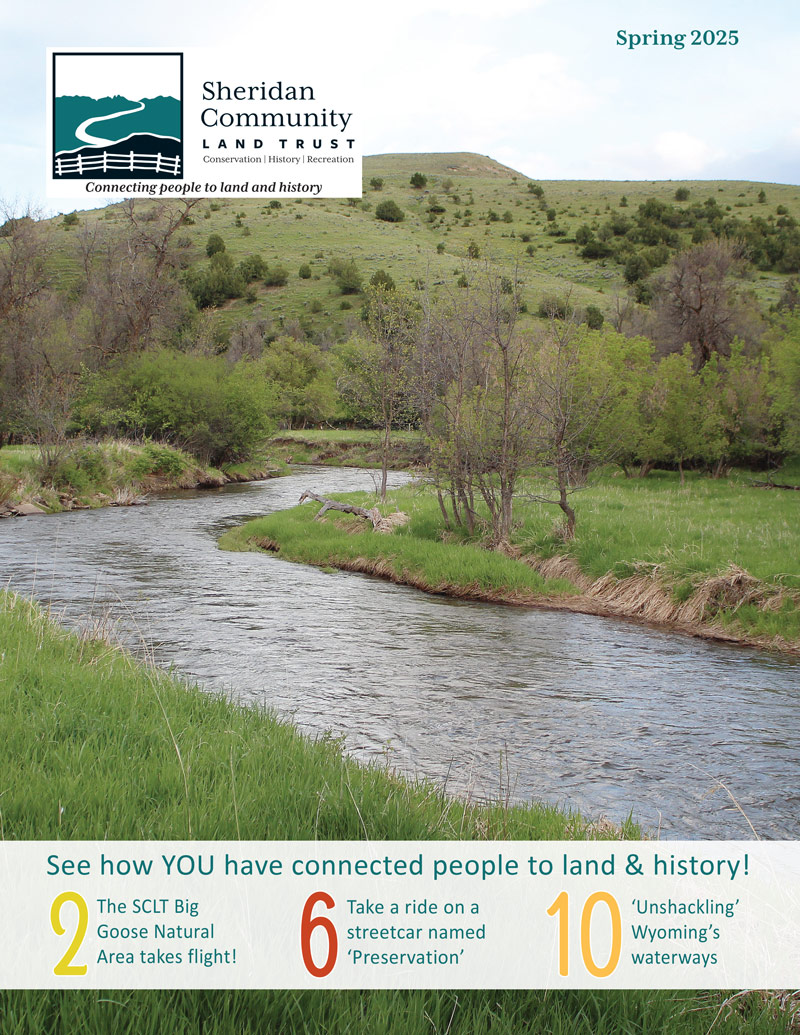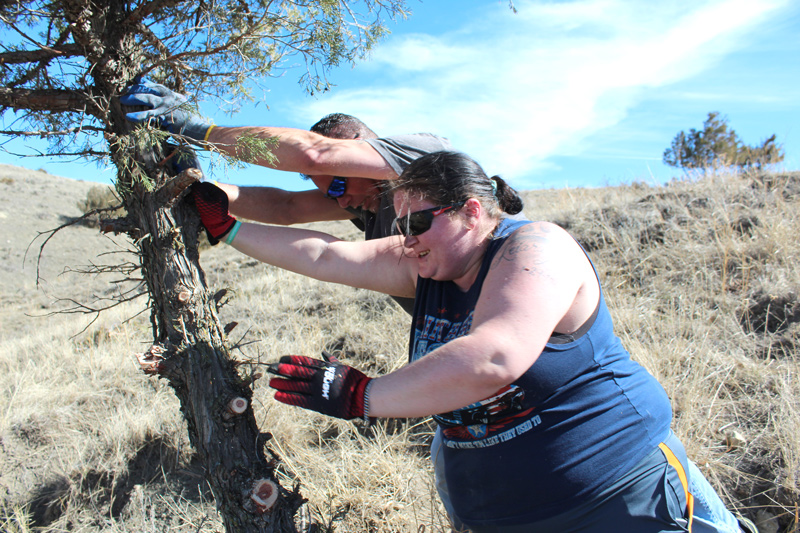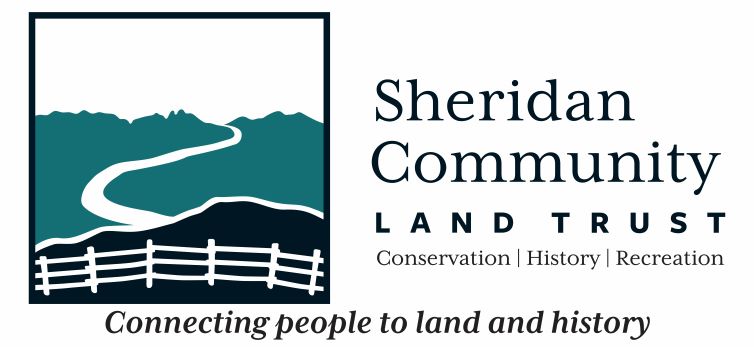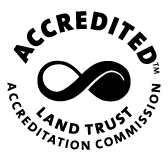Since our inception, SCLT wouldn’t be able to serve our community if our community didn’t serve alongside us. While trails may be the first thing that comes to mind when you think about volunteering with SCLT, as SCLT responds to more community needs, the ways you can give back to a place you love are nearly limitless.
“For volunteers, there’s something for everyone with SCLT,” remarked volunteer Todd Wold. “I chose to volunteer with SCLT because of the multi-faceted approach to conservation, making great outdoor areas recreation-accessible for hikers and bikers and their dedication to historic documentation, preservation and education.”
Todd was drawn to May’s historic preservation project at the Evangelical Lutheran Cemetery of Monarch. Serving as an “advance party,” Todd spent portions of several days weed whacking so volunteers could more efficiently clean headstones, mend fence and document gravesites. He also flagged potential unmarked graves – key to the preservation work ahead.
A summer surgery put the brakes on Todd’s intentions to volunteer on the trails. Carrie Edinger asked him, as a follow-on project to the cemetery cleanup, to dig into who may be buried in the foothills just above the Tongue River. Not literally, of course; in this case he poured through a litany of resources to try to establish the identities of as many of those who had been buried at the cemetery but did not have a headstone marker.
Microfiche funeral home records 1909-1940 were “key” along with many books and pamphlets all housed in the Sheridan Fulmer Public Library, its Wyoming Room, and its incredibly helpful staff. It’s “Obituary Card Catalog,” coupled with digital newspaper and death record collections helped establish the cause of death for how many people passed, while other online resources allowed him to obtain copies, census data, passenger manifests, church records and more from the National Archives. The Sheridan County Recorder’s Office aided with copies of land purchase and wedding records.
“My goal was to attempt to pull as much information as I could find from the Wyoming Room and online for each person and hopefully make it available electronically for other researchers or family members, so they could have ‘one stop shopping’ for the information and research leads rather than combing through a lot of databases, locations, books and empty leads.”
All told, Todd invested more than 250 hours in the project. In October, SCLT donated the results of the research, along with aerial images from the cleanup that serve as a map to graves, and a list of people established with reasonable certainty as having been buried at the cemetery.
What did he learn about the people? Nearly all are first-generation immigrants to America or the American children of first-generation immigrants. About 65% interred in unmarked graves are believed to be children.
“Preservation projects such as this one are instrumental in providing the historical background and context of their stories – heartrending in many cases – as well as documenting the diversity of their backgrounds and experiences that helped to shape Sheridan and Sheridan County. These are the stories of the blue-collar, working-class families who helped put Wyoming coal at the forefront of energy powering the State and the Nation,” he closed. “But of course, there is always more to be learned about every individual interred, as well as their families, and the ‘Rest of the Story.’”
And without Todd’s generous help, those stories wouldn’t be preserved and told today so they aren’t forgotten tomorrow.
If you’d like to give back to a place you love, scan the QR Code or visit.
Caption for volunteer collage: Whether you’re 2 or 102, when you volunteer with SCLT there’s something fun for everyone to do. Oliver Granger (6) helped clean headstones at this spring’s Monarch Lutheran Cemetery cleanup. At the tender age of 2, Aubrey Samson was SCLT’s youngest volunteer. You can see her showing her mom Daisy Delaney (7) how to pull posts at a fence removal near Parkman in August. The Explore History, Discovery Sessions, and Unplug programs wouldn’t be possible without volunteers who kindly share their time, knowledge and stories. David Nicolarsen (2) taught our Young Explorers about geology and even had them mine gypsum at a local quarry. Gordon Edwards (4) and Emily Emond (5) taught us the critters that live in Goose Creek. The Clearmont Historical Group helped us tell stories about some influential women of SE Sheridan County, including Franz Felz (8), who told her own story! Of course, trail work will always be a volunteer staple. At Hidden Hoot, good friends helped smooth tread (3) while Kensly Lund (inset) took pics. Sheridan HS Woods students (9) plied their skills building a bridge while Big Horn MS (10) students helped at Red Grade Trails during their Service Day. John C. Schiffer Collaborative School students (11) helped remove fence and invasive Russian olive at Bridges West. In September, First Interstate Bank (1) employees joined us to build The Brink Connector at the top of Red Grade Trails.

